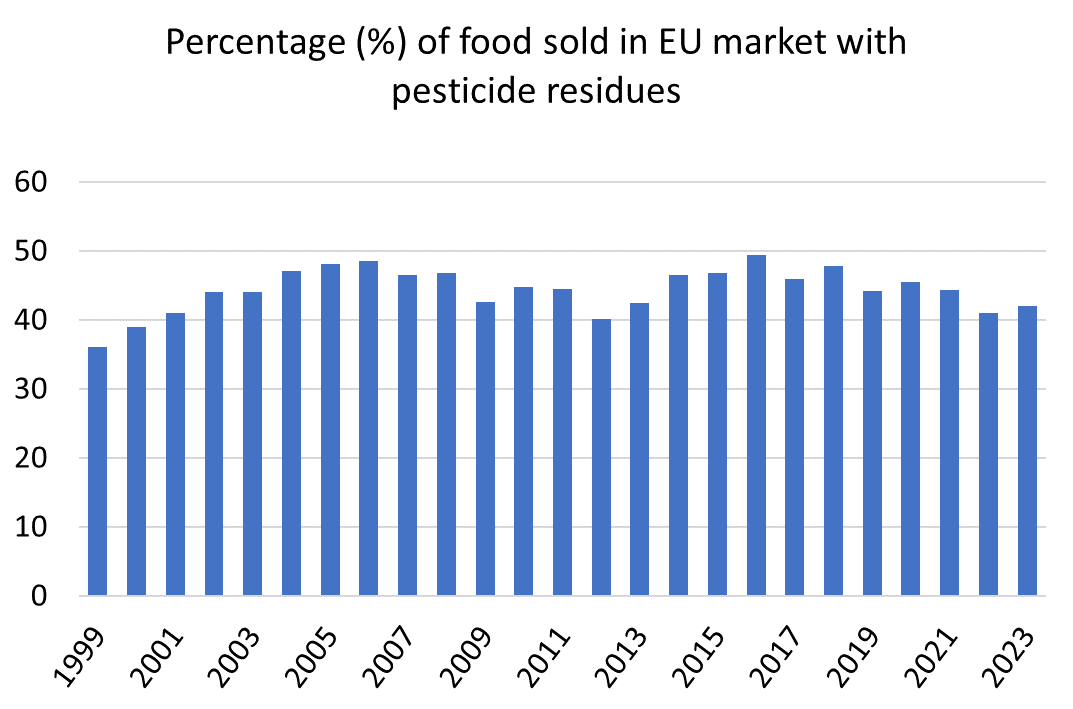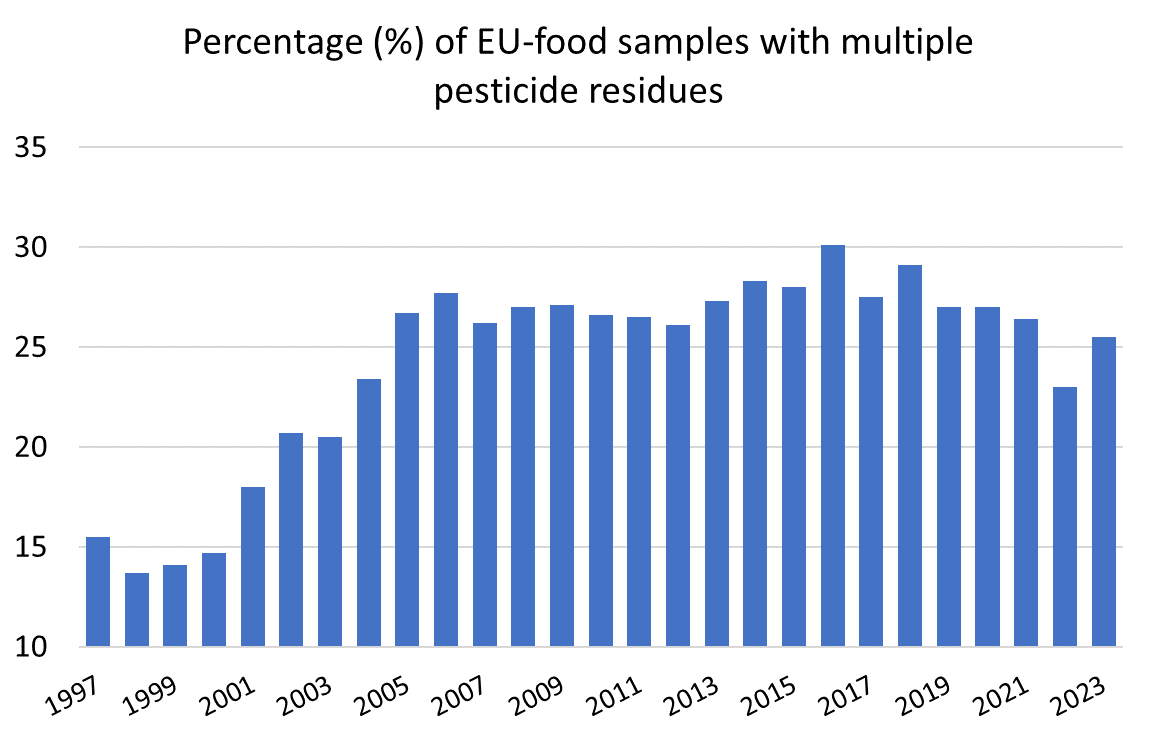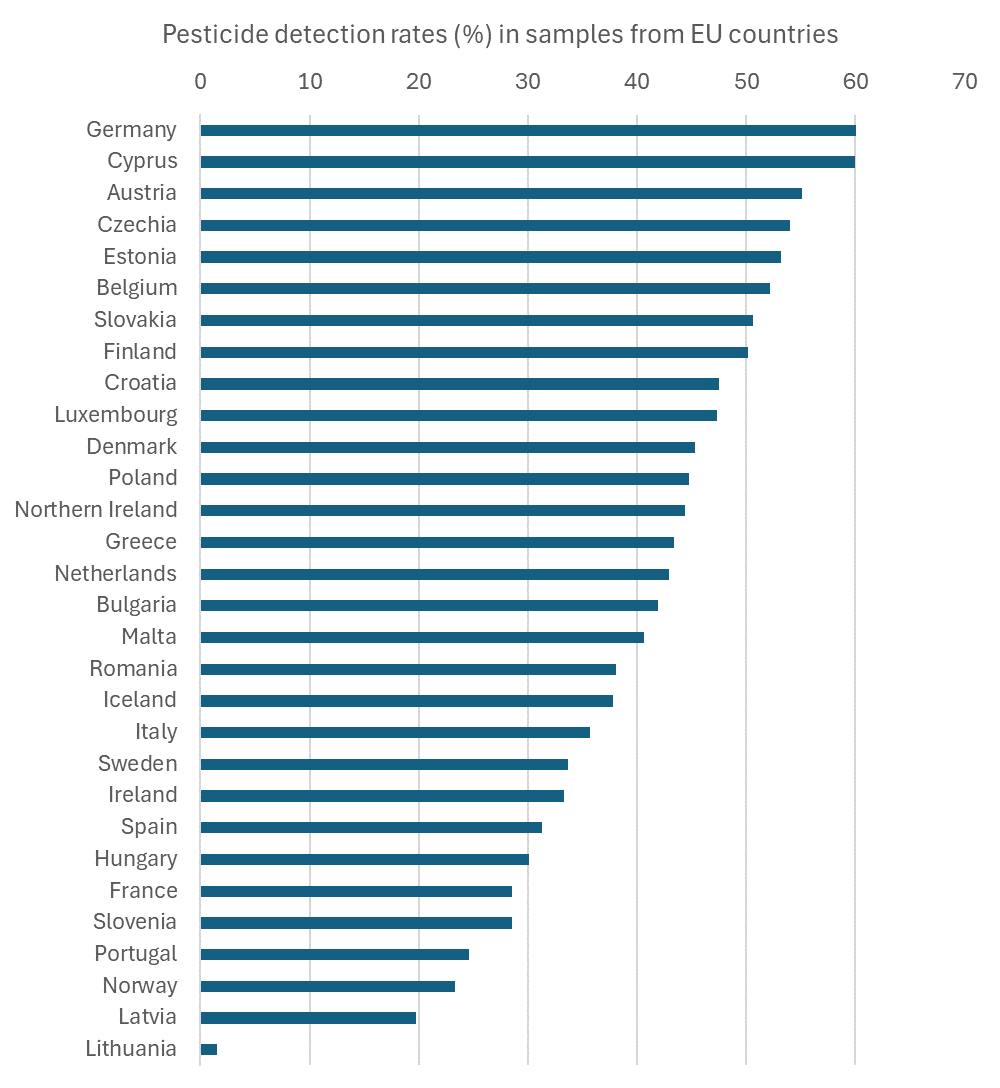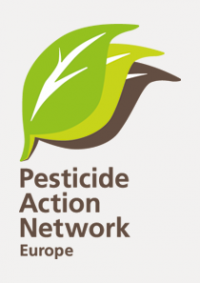New figures released by the European Food Safety Authority [1] reveal that 42% of European food sold across Europe contains pesticide residues, with fruits such as pears and oranges being at the top of the list. Alarmingly, over half of these samples contained multiple pesticide residues, revealing that Europeans are exposed to pesticide cocktails. On average, the number of food samples contaminated has hardly changed since 2000, but the number with a pesticide cocktail has doubled.
PAN Europe raises alarms since more and more studies reveal the risks. We call on EU regulators to take urgent action to address the health risks of pesticide cocktails in our food.
While EFSA highlights that 96.3% of samples fall within current legal limits, PAN Europe warns that these findings are far from reassuring. The official safety thresholds are not only based on old studies but are also using the outdated assumption that people are only exposed to one pesticide at a time - an assumption now clearly disproved by EFSA’s own data.
“It is highly alarming that Europeans are exposed to such high levels of pesticide mixtures, while regulators continue to ignore the real-world risks of combined exposure,” said Angeliki Lysimachou, Head of Science and Policy at PAN Europe. “This is a public health failure. The science is clear: chemical cocktails can have serious effects, especially on vulnerable groups such as children and pregnant women.”
It has been over 20 years since EU law [2] requires the consideration of cumulative and combined effects of pesticide residues in food. Different types of pesticides are used in food production and many of them end up as residues in food. Yet, meaningful implementation is still lacking. A growing body of scientific research confirms that exposure to multiple pesticides - even at low doses - can lead to cognitive disorders, immune dysfunction, and various cancers, particularly during early-life development.
While EFSA continues to develop complex , theoretical and unrealistic models to assess mixture toxicity, PAN Europe urges the immediate application of a Mixture Assessment Factor (MAF) to reduce allowable exposure limits and better protect public health.
Hans Muilerman, Chemicals coordinator at PAN Europe, added, “Considering that nearly one in four food samples in the EU contains pesticide mixtures, the failure to assess and regulate the health risks of these cocktails is unacceptable”. “The EU must act now to prevent further harm to its citizens.”
The report also highlights significant disparities in sample collection among EU countries and food types, making scientific comparisons difficult. Nevertheless, based on the collected data, fruits, followed by rice, potatoes, and dried beans, had the highest contamination levels. Germany, Cyprus, Austria, Czechia, Estonia, and Belgium reported detection rates between 52% and 60%.

Figure 1 - Percentage of food samples with detectable pesticide residues since 1999

Figure 2 - Percentage of food samples with detectable multiple pesticide residues since 1999

Figure 3 - Percentage of samples with pesticide residues per country
Contact:
- Dr Angeliki Lysimachou angeliki [at] pan-europe.info +32 496 392930
- Hans Muilerman hans [at] pan-europe.info +31 655 807255
Notes:
[1] The 2023 European Union report on pesticide residues in food - https://doi.org/10.2903/j.efsa.2025.9398
[2] Regulation 396/2005 on Maximum Residue Levels of pesticides in or on food and feed of plant and animal origin.
